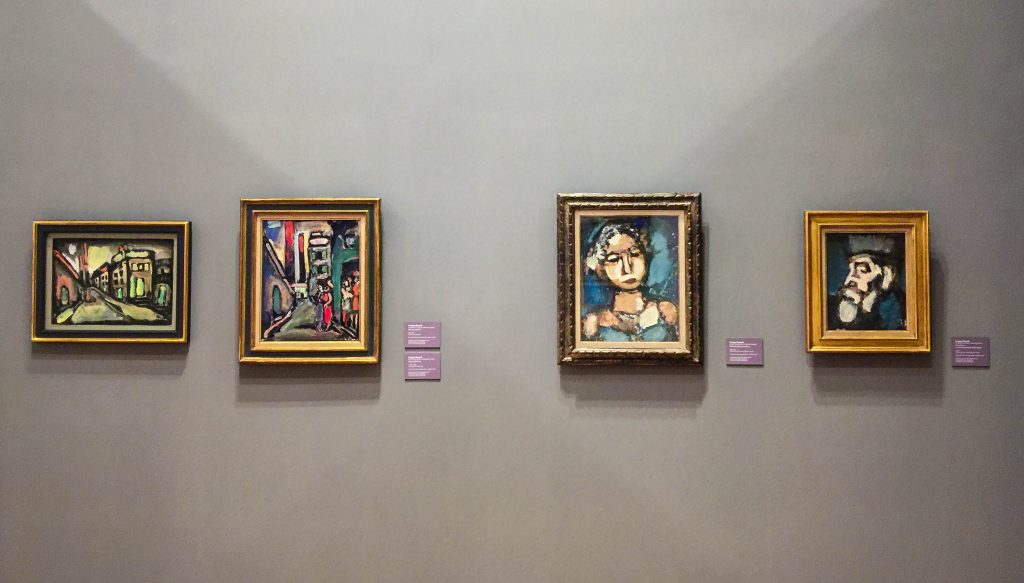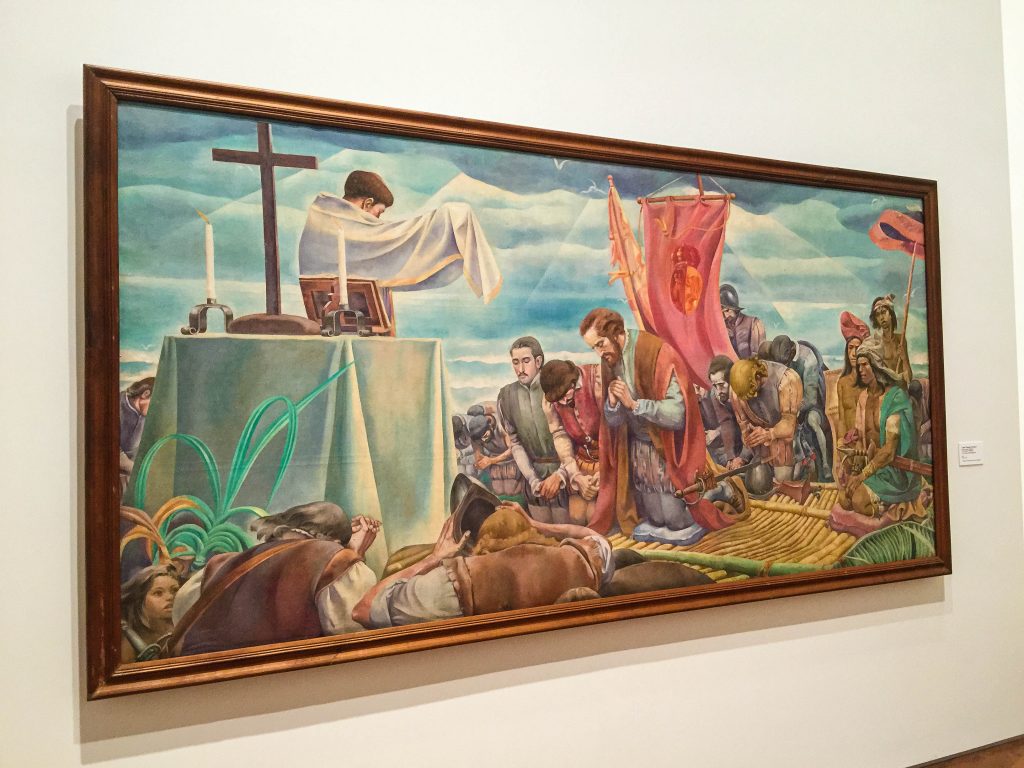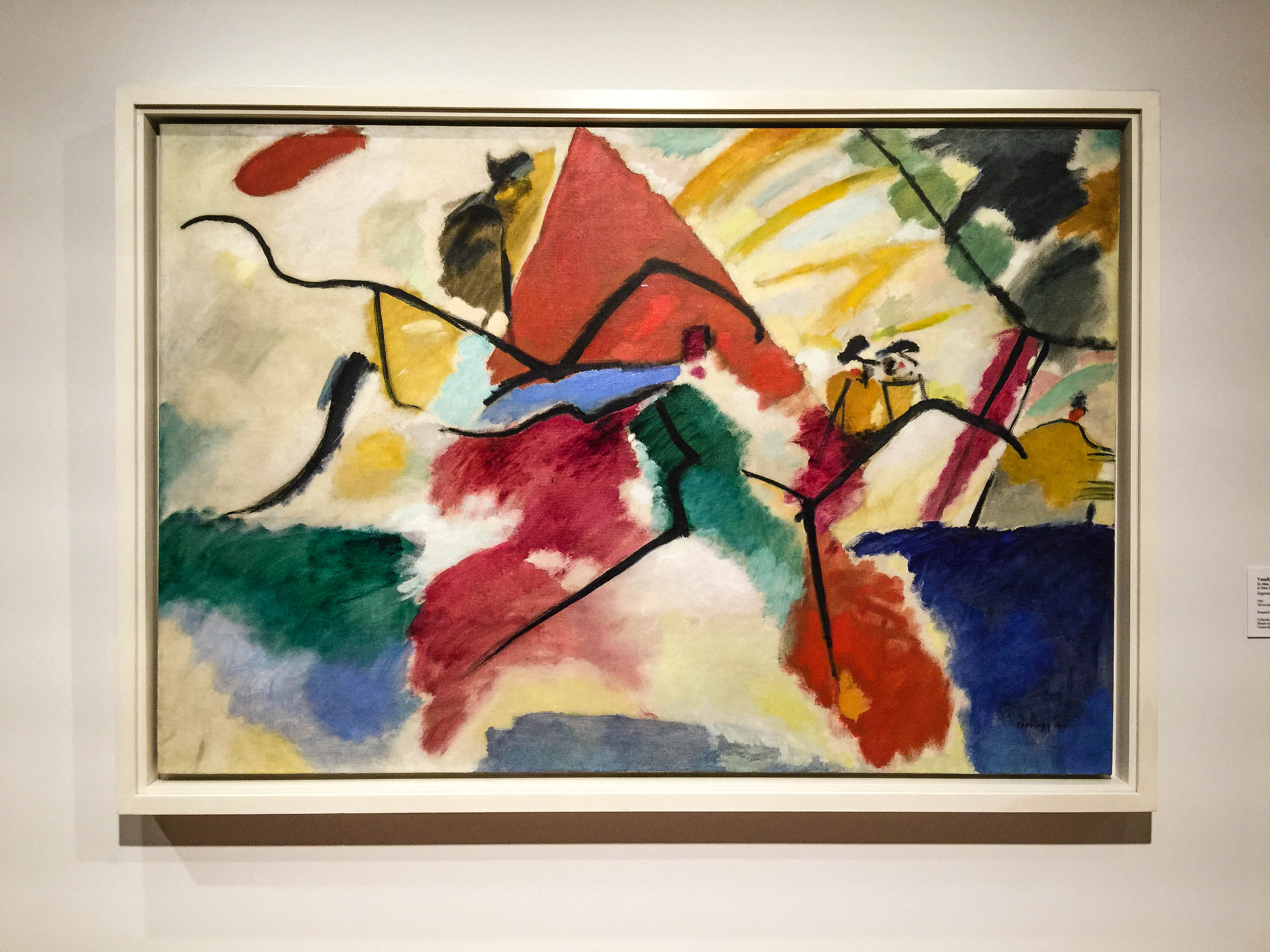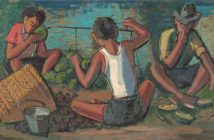Curated and presented in partnership with the iconic Centre Pompidou in Paris, Reframing Modernism is the first international special exhibition housed at the National Gallery. It showcases masterworks flown in from Centre Pompidou, hung alongside pieces from the Southeast Asian region, including Indonesia, Vietnam and the Philippines, many acquired via loans from private collections or renowned art institutions such as the Sompot Upa-In Estate and the Cultural Centre of the Philippines.

This is the first time that viewers in Singapore can appreciate artworks from Europe and Southeast Asia in the same exhibition space.
This exhibition is also the first time that the East and West collide in the world of modernism, as it seamlessly features works by the biggest European names such as Henri Matisse, Pablo Picasso, Marc Chagall and husband and wife pair Robert and Sonia Delaunay, in parallel with those of Southeast Asian artists such as Georgette Chen (Singapore), Nguyen Gia Tri (Vietnam), Tang Chang (Thailand) and Affandi (Indonesia).
This landmark unification casts light on the concepts and styles of individual artists and how they are connected by certain shared similarities, while simultaneously acknowledging their irreconcilable differences. Taken in its entirety, the most defining attribute of Reframing Modernism is its diversity, seeking to amalgamate art from different parts of the world, so as to construct a more balanced and plural perspective of modernism.

The Fairies, Nguyen Gia Tri, 1936, collection of Geraldine Galateau Paris. This is the largest piece of artwork in the entire exhibition, consisting of 10 panels.
A visual delight for art appreciators
What’s most markedly different about this exhibition is how the works draw viewers into the study of modernism, and gently guides them to form their own connections and conclusions. Consisting of 217 works presented in three separate galleries, the exhibition is largely artist-centric, focusing the viewers’ attention more narrowly on the use of artistic elements such as colour, form, geometry, space and perspective, and more broadly on specific conceptual and stylistic themes such as harmony, communication and societal expression. All these contribute to a visually engaging and mentally stimulating experience.

This wall features a series of four paintings by Georges Rouault, and one can observe his characteristic use of thick, dark brushstrokes that envelope patches of jewel-like colour. His works evoke a deep sense of emotion and perspective, presenting a highly subjective take on reality.
Distinguished Filipino muralist and one of the 51 artists represented in Reframing Modernism, Carlos “Botong” Francisco, wrote: “Art…must have the power to communicate and not to repel. That is why I love to paint big murals, for like a composer I can create a symphony from the history of our country and our own way of life.” Indeed, his works, with their bold colours and ambitious and “cinematic” quality, spearheaded the Philippines modernism movement, yet still retaining tradition and showcasing the distinctive Filipino culture.”

First Mass in the Philippines, Carlos “Botong” Francisco, 1965, Oil on Canvas, 301 cm x 145 cm, Collection of National Art Gallery, National Museum of the Philippines.
Singaporean artist Georgette Chen is the only artist represented in both the collections of the National Gallery Singapore and Centre Pompidou. Her signature work Landscape (Paysage) is the only Singaporean work in the Centre Pompidou’s collection. Her distinctive style is reflected in her use of dense compositions, strong but naturalistic colours and opaque, fragmented brushstrokes, striking a balance between style and realism. Chen’s preferred subject matter is primarily portraitures and landscapes, and her works depict these physical surroundings through her unique modernist perspective, highlighting her great attention to detail and incorporating elements of Fauvism and Post-Impressionism. Tin Mine (Ipoh) presents the condensed rock formations of an open-cut mine as striations of strong colours that accentuate her modernist vision.

Local artist Georgette Chen is the only artist represented in both the collections of the National Gallery Singapore and Centre Pompidou, Paris.
One of the biggest names in the art world, Henri Matisse, is represented in the first gallery, with his work Interior in Yellow and Blue. A vanguard of the Fauvism movement, his works primarily centred on wild brushstrokes and violent, non-naturalistic colours. To Matisse, it was instinctive to harmonise modernism with decoration, and this could be observed in the sense of passion created through his creative use of flat, saturated colour and arabesque lines.
Another pioneer of the Fauvism movement, Albert Marquet, also produced works with vivid, intense colour and thick, detailed brushstrokes, such as View of Agay, which can be observed in the first gallery. However, his later works began to significantly depart from the signature characteristics of the Fauves, returning to a more traditional approach to composition. During his travels through North Africa, he became preoccupied with capturing the reflective effects of light on water, which is most notable in Venice, The Yellow Sail.

Interior in Yellow and Blue, Henri Matisse, 1946, oil on canvas, collection of Centre Pompidou, Paris.
Discover lesser-known names in the art world
The second gallery places greater emphasis on abstraction, and no other artist demonstrates this more clearly than Vassily Kandinsky. His book Concerning the Spiritual in Art underscores his modernistic style, likening his colours and composition to music capable of producing emotional and spiritual effects. He wrote: “…the harmony of colours can only be based on the principle of purposefully touching the human soul”. This is captured most apparently in Impression V (Park), where Kandinsky wildly incorporates lines and colours freed from the strictures of concrete reality.
Traces of Kandinsky’s style can be found in Henry Valensi’s works, which are also displayed in the second gallery. Valensi took on a “musicalist” approach towards painting, seeking to integrate form and colour in a sort of musical orchestration. His works such as El Kantara, Expression of the Car and Marriage of Palms, Bou Saada have roots in both the Cubist and Futurist movements, embodying broken pictorial abstractions reminiscent of Cubist techniques, while attempting to express the dynamics of movement and motion in a Futurist manner.

This set of five works is by Henry Valensi, who adopted a “musicalist” approach to painting, and seeks to combine forms and colours in musical orchestration of sorts.

Expression of the Car (Expression de L‘auto), Henry Valensi, 1920, oil on canvas, collection of Centre Pompidou, Paris. This work emphasises and seeks to capture the sense of movement in modern life.
Modernist husband-and-wife painters Robert and Sonia Delaunay also frequently experimented with form and colour to develop new approaches to perception. They painted largely in a unique style of “Orphic Cubism”, which united strong, contrasting colours, with the Cubist fracturing of space, culminating in hugely successful abstract representation. Robert Delaunay’s Endless Rhythm and Sonia Delaunay’s Colour Rhythm, which are displayed next to each other in the second gallery, reflect their strong emphasis on form, whether circular, square or linear, and create rhythm through the striking visual effects of colours.

Pictured here are three works of husband and wife pair Robert and Sonia Delaunay, who were particularly interested in the study of light, movement, colour and geometry. You can observe the use of strong colours and various geometric shapes in their works.
Moving closer to home, the third gallery showcases Malaysia painter Latiff Mohidin, experimenting with local forms drawn from natural and cultural symbols such as pagodas, mosques, shells and leaves, to formulate a uniquely Southeast Asian modernist expression. Among his Pago-Pago series of works painted between 1964 and 1969, Malam Merah and Pago-Pago 69 (Metamorphosis) are most prominent, tapping on dynamic forms, colours and materials and embracing his versatility as an artist, while still retaining historical and cultural features unique to Southeast Asia.

These are two works by Latiff Mohidin from his famous Pago-Pago series that he painted between 1964 to 1969. The subject matter of the piece on the left is a pagoda, and the use of rich colours and animated brush work strongly alludes to the culture and background of Southeast Asian communities.
Hailing from Bandung, Indonesia, artist Ahmad Sadali painstakingly developed his own innovative style to oppose critics who termed Bandung artists as mere “slave[s]of the Western laboratory”, and criticised them for their lack of originality in their Cubist works. In seeking to incorporate his philosophical and spiritual views in his art, his canvases portray highly emotive and symbolic forms, vivid colours and gold leaves, conjuring a subtle yet powerful sense of peaceful meditation, transcendene and enlightenment.

Through his art, Ahmad Sadali hoped to challenge Western stereotypes and express his emotional and spiritual outlook. The use of vivid colours and gold leaves helps evoke a sense of enlightenment and transcendence in the viewer.
Find inner harmony
As you make your way through the galleries, you begin to realise that many of the artworks revolve around the themes of visual harmony, perception and spirituality and seek to promote cross-cultural exchange between the Eastern and Western art worlds. Despite the myriad pathways and subject matters, there still remain several convergent characteristics between artists from different parts of the world.
This exhibition unravels the concept of modernism in a way that draws the artists closer to the viewers, enabling the smooth and unbiased delivery of different perspectives that enhances the current modernism discourse. Apart from developing a deeper understanding of the paradigm of modernism, viewers may lose themselves in the vast collection of artworks, and in the process, possibly discover a sense of inner peace and fulfilment.
The Reframing Modernism exhibition is open to the public until July 17, 2016 at the Singtel Special Exhibitions Gallery in the National Gallery Singapore. Tickets are priced at S$15 for Singaporeans and permanent residents, and S$25 for non-Singaporeans and are available at the gallery or online. The exhibition is open between 10 am to 7 pm on Mondays to Thursdays, and Sundays and public holidays, and between 10 am to 10 pm on Fridays to Saturdays and the eve of public holidays.









